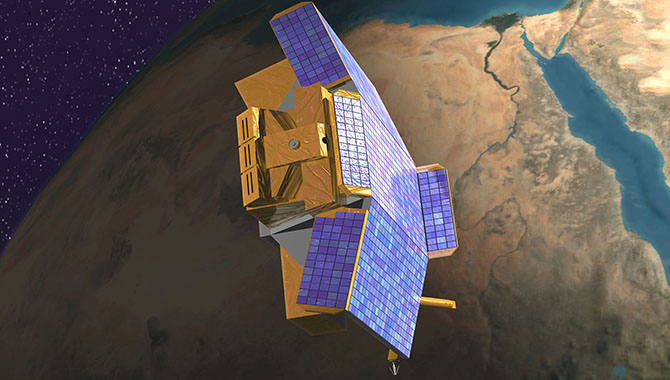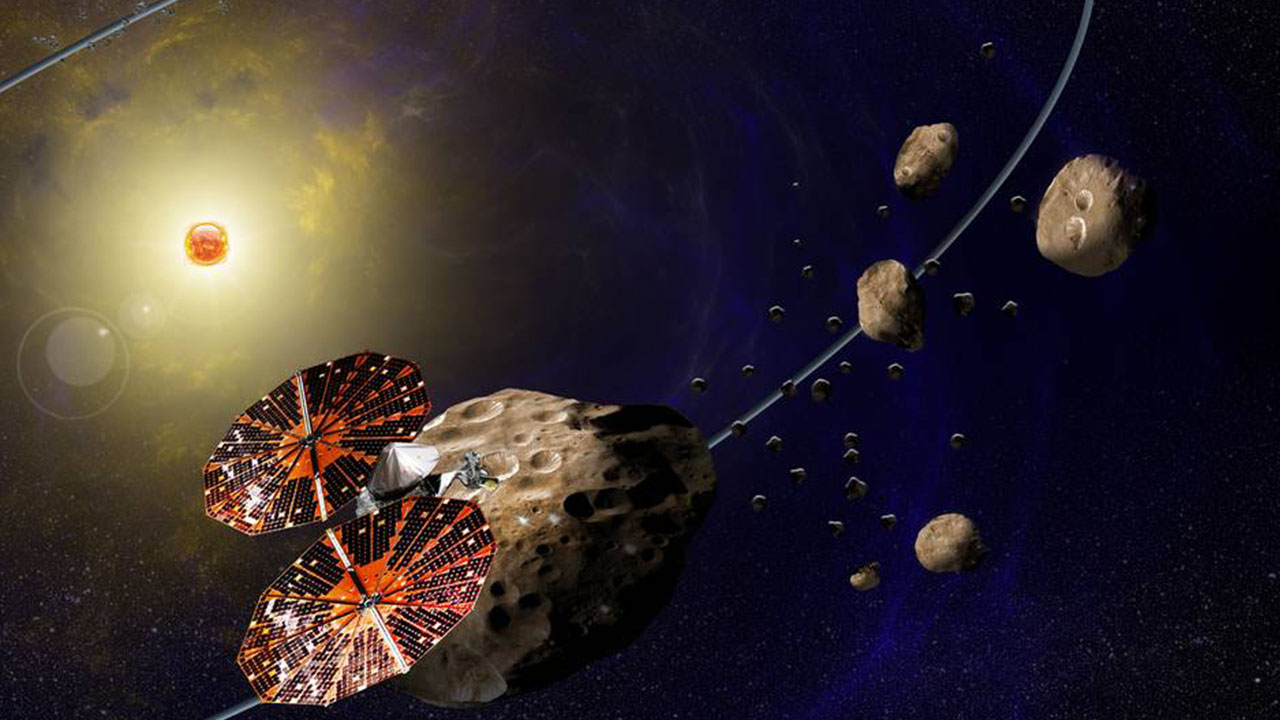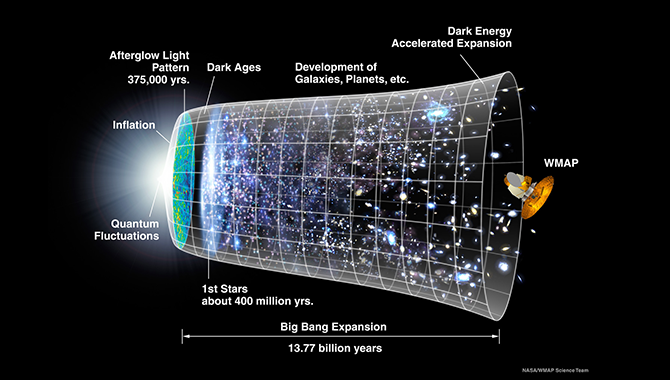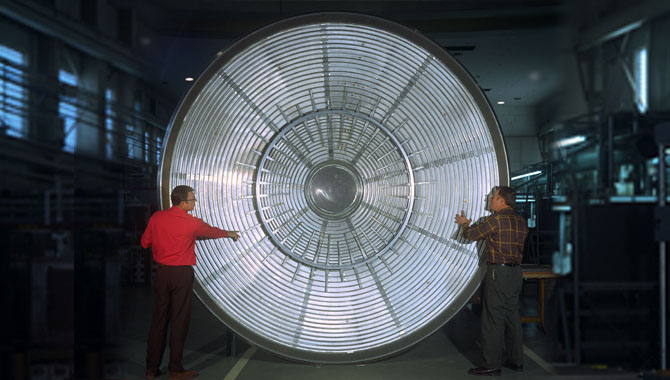
Artist’s conception of the CHIPSat, NASA’s first and only University-class Explorer mission.
Image Credit: NASA
On January 12, 2003, NASA’s first and only University-Class Explorer (UNEX) mission set out to investigate the extremely hot gas in the interstellar medium surrounding the solar system.
The UNEX program was designed to support low-cost, quick-turnaround projects with a focus on delivering significant science or demonstrating novel technology. Intended to meet short-term goals, UNEX missions would be operated by university research teams, freeing NASA centers to focus on larger programs while increasing the number of science missions in orbit.
The Cosmic Hot Interstellar Plasma Spectrometer (CHIPS) was selected by NASA for UNEX in 1998. At a total cost of $14.5 million—including the launch vehicle—CHIPS was significantly less expensive than most agency missions at the time, which typically cost hundreds of millions of dollars and spanned a decade or longer. CHIPS, designed to fly for a single year, was originally conceived as an instrument that would travel on a communications satellite. This proved impossible because the GPS satellite would be launched on a Russian rocket, and a 1994 law prohibited federally funded missions from flying on foreign launch vehicles. As a result, CHIPS evolved into CHIPSat: an independent spacecraft featuring a single science payload.
CHIPSat was built by SpaceDev, Inc. Weighing 60 kilograms and using 42 watts of power, the spacecraft was designed to be as cost efficient as possible. SpaceDev utilized commercial-off-the-shelf (COTS) technologies throughout the hardware, software, and communications systems, ultimately producing a low-cost, robust vehicle roughly the size of a suitcase.
Despite its small stature, CHIPSat was intended to provide novel science findings concerning the physical processes in the interstellar medium (ISM): the space between stars that looks empty to the unaided human eye. In actuality, the ISM consists of gases (hydrogen and helium) and dust (silicates, carbon, ice, and iron). In the region surrounding the solar system—known as the “local bubble”—gases in the ISM are very low density and believed to be extremely hot: a million degrees Kelvin. As gases in the ISM cool, they form clumps that can eventually turn into stars. How this happens, and what causes the gas to cool, is not known. CHIPSat was conceived to help scientists find the answers.
The Space Science Laboratory (SSL) at the University of California, Berkeley (UCB) built the CHIPS instrument: a spectrometer that would scan the entire sky to investigate the diffuse gas in the local bubble. Focusing on the extreme ultraviolet spectrum, CHIPS would detect emissions from the hot gas in the ISM, enabling researchers to assess electron temperature, investigate ionization conditions, and determine the mechanisms by which the million-degree plasma cooled. With this information, they would better understand the processes and properties of the ISM and learn more about how stars are born.
The spacecraft took to the skies in early 2003, hitching a ride on a Delta II rocket as the secondary payload to the Ice, Clouds, and Land Elevation Satellite (ICESat) mission. Science operations began within a month of reaching the operating orbit 350 miles above Earth. But the mission did not deliver the expected results.
Technically, CHIPSat was a success. The spacecraft performed as needed, remaining operational for five years—despite some anomalies—which far exceeded the single-year mission for which it was designed. The CHIPS instrument worked flawlessly as well. Together, satellite and instrument proved the concept of the UNEX program of delivering low-cost, high-science missions that could be operated by university research teams.
The findings themselves, however, were negative. CHIPSat did not detect extreme ultraviolet emissions from gas in the local bubble. This in itself was important: it established that theories about the physical qualities of the local ISM were incorrect. Perhaps the gas was hotter or cooler than expected, or farther away than believed, making it impossible for the CHIPS instrument to detect emissions; or the components of the ISM may have been different than anticipated. Whatever the reason, the CHIPS spectrometer did not achieve the science goals. In 2005, CHIPSat was repurposed as a solar observatory. The team proposed a study of extreme ultraviolet emissions from the sun, examining the temperature in the corona and chromosphere and its impact on Earth’s upper atmosphere. Funding was not forthcoming.
Altogether, CHIPSat operated for five years before being retired in April 2008. Despite the limited science findings, it succeeded as a technology experiment. It established the viability of COTS components—many of which had never before flown in space— for science missions and was the first U.S. mission to communicate solely over internet protocol, utilizing TCP/IP and File Transfer Protocol (FTP). The durability of CHIPSat, which was still operational when put into safe-hold mode in 2008, confirmed the utility of small, low-budget spacecraft. Ultimately, CHIPSat was the only UNEX mission ever launched. Yet its impact may be felt in today’s CubeSat projects, which enable teams at NASA, universities, and elsewhere to develop low-cost, fast-turnaround technology demonstration or science-based missions.
Learn more about CHIPSat.
Find out about NASA’s Explorers Program at Goddard Space Flight Center (GSFC).
Read an APPEL News article about how NASA is harnessing the capabilities of CubeSats and small satellites across diverse missions.









